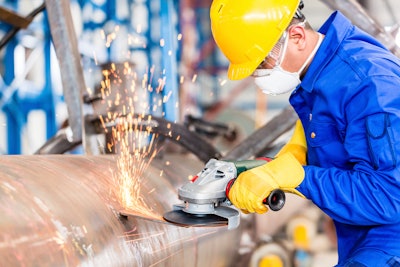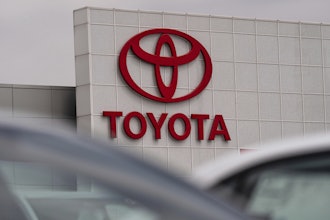
Production teams are diving head-first into the information age. They can scoop up data from almost any point in the production process, analyze it and translate it into actionable intelligence to make informed decisions.
Many safety teams, in comparison, are stuck in the dark ages. That’s because they still rely on antiquated data-collection and reporting techniques. Too often, they must manually enter safety data for audits, training, inspections, incident reports and other processes. And in most cases, the systems aren’t connected to production systems.
Fortunately, a Connected Enterprise provides an opportunity to close this disparity – and revolutionize industrial safety through the use of safety data.
Laying the Groundwork
If you’re a safety professional, you may not be as familiar with the concept of a Connected Enterprise as your production counterparts. In short, a Connected Enterprise creates the foundation for seamless connectivity, data collection and information sharing. It converges IT and industrial networks, which have long been separate, into a single and secure network architecture.
It also uses key enabling technologies, including Industrial Internet of Things (IIoT) devices, analytics software, and wireless and mobility technologies. This approach is already helping many industrial companies gain deeper visibility into processes, uncover new ways to improve operational efficiencies, improve quality management and much more. And it can work similar wonders for process and machine safety.
Harnessing the power of safety and operational data can substantially improve safety compliance and performance. The Connected Enterprise enables this, empowering safety professionals with a real-time understanding of worker behaviors, machinery compliance, causes of safety shutdowns or stoppages, as well as safety anomalies and trends.
Putting Safety Data to Work
A smarter approach to safety begins with using contemporary safety technologies that combine machinery control and safety control into one platform. These systems are less susceptible to nuisance shutdowns than hardwired safety systems, which can help you improve productivity and profitability.
But they also offer another key benefit: access to safety-system data.
This data can include stoppage codes, error and fault codes, device statuses, event sequences and more. By harvesting this data and converting it into meaningful information, you can transform how safety is monitored and managed in your operations.
Some key ways your safety-system data can help you include:
- Monitor safeguard use, and misuse: Safety-device data can be used to identify and mitigate instances of misuse. E-stops, for example, are intended for emergencies only but are often used for other purposes, such as to clear jams. This misuse can increase both scrap and downtime. And the fact that these misuse instances can’t be captured in most plants only perpetuates the problem. In a Connected Enterprise, an e-stop activation’s time stamp, downtime duration, and line and shift details all can be recorded. Stoppage reason codes can also log and indicate why a machine was stopped. Safety professionals can review this information and investigate the issue’s root cause.
- Better understand safety risks: Risk-assessments findings are rarely reviewed after machine commissioning. In a Connected Enterprise however, risk-assessment data can be utilized in the form of a risk calculator. The idea is simple: Safety professionals can enter anticipated use frequency of a particular safety function from the risk assessment. This data serves as the baseline for safety demand rates and performance. From there, they can compare the data against the machine’s actual use frequency data, indicating any variance from the design expectations. The result is an unprecedented ability to measure changes in demand and risk for each machine access point or safety function.
- Enhance safety: Greater data and connectivity in a Connected Enterprise creates many opportunities to enhance worker and environmental safety, and improve productivity. Remote monitoring of dispersed or hard-to-reach operations, for example, can reduce worker travel demands and exposure to hazards. Visibility into process states, environmental conditions and other factors can help prevent the release of hazardous materials into the environment. There also are opportunities to transform operations to make them inherently safer. In oil and gas operations, for example, ethernet-connected subsea platforms reduce the need for manned off-shore platforms, which can be vulnerable to potentially catastrophic events. And autonomous technologies can reduce the number of workers needed to transport mined materials from pit to port.
As impressive as all of this sounds, it’s only scratching the surface. For more information on safety in a Connected Enterprise, including guidance on how to implement it, check out our white paper, Reimagining Safety in The Connected Enterprise.
George Schuster is a TÜV-certified Functional Safety Expert (FSExp) and Certified Functional Safety Engineer (CFSE) at Rockwell Automation.






















